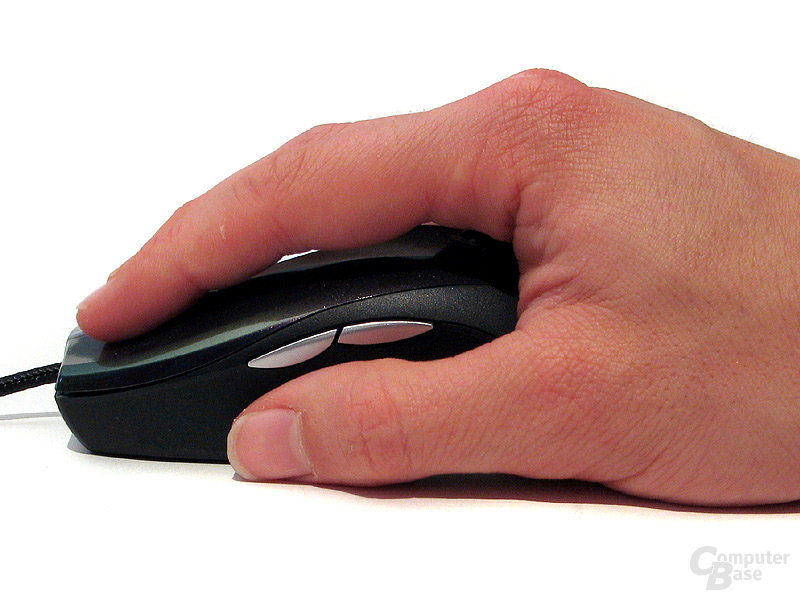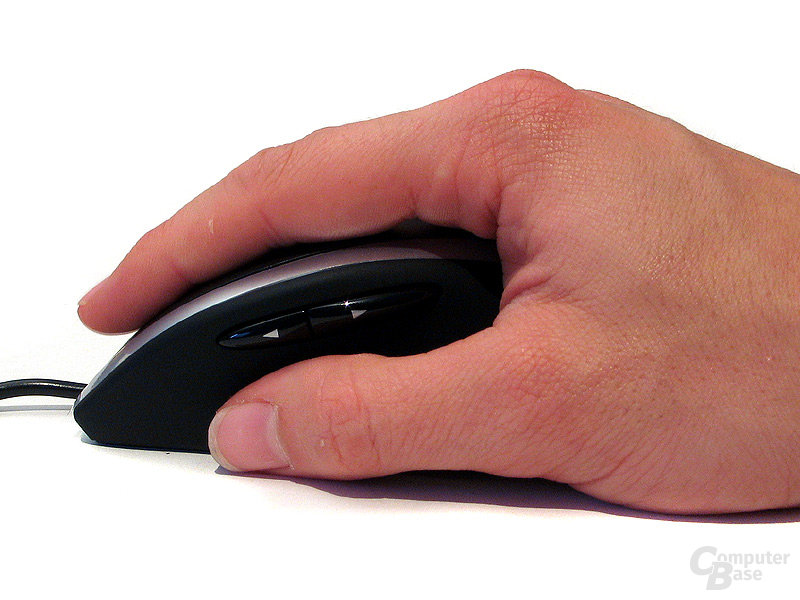In the test 15 years ago, six PC mice from Genius, Microsoft, Razer and Logitech competed. All mice in the test were characterized by very individual properties, but the Razer Death Adder left the best overall impression at the time.
Table of contents
- 1 The Death Adder was Razer's best mouse
- Three mice from Logitech
- Conclusion
The Death Adder was Razer's best mouse
The first mouse in the test was the Genius Navigator 535. With a price of around 30 euros, it was one of the cheaper gaming mice, but should be able to keep up with the more expensive competition from Microsoft and Razer. Thanks to its symmetrical design, it was suitable for both left- and right-handers. A total of six freely assignable buttons plus a mouse wheel were available. In addition to the two main buttons, there were four side buttons, of which only the two buttons on the thumb side were accessible due to anatomy. While the Navigator 535's main buttons had a good pressure point, the side buttons were rather spongy. Above all, the clattering and stiff mouse wheel gave cause for criticism.
-
 Test field
Test field
Image 1 of 7
 Test field
Test field  Genius Navigator 535 Agama
Genius Navigator 535 Agama  Microsoft Habu < /figure>
Microsoft Habu < /figure>
 Razer Death Adder
Razer Death Adder  Logitech MX-400
Logitech MX-400  Logitech MX Revolution
Logitech MX Revolution  Logitech VX Revolution
Logitech VX Revolution The second test candidate was the Microsoft Habu, which had been developed in cooperation with Razer. At 50 euros, it was less attractively priced than the Navigator 535 and was only suitable for right-handers. The Habu was very bulky compared to other Razer mice, meaning it was unsuitable for users with small hands. The Habu had a total of seven freely assignable keys. The main keys tended to clatter due to the large amount of play and, like the other keys, produced an unpleasantly shrill and loud clicking sound. There were plus points for the large and comfortably adjusted mouse wheel.
The Razer Death Adder was the successor to the hugely successful Copperhead. Like the Habu, the Death Adder relied on an elongated mouse body that was ergonomically shaped for right-handers. The five keys on the Death Adder were much better designed than on the Habu: They had a pleasant pressure point and click sound and there was no rickety impression. The mouse wheel was larger and stiffer than that of the Habu. Otherwise, the workmanship and feel of the Death Adder was excellent.
Three mice by Logitech
Logitech was represented in the test with three mice. At 30 euros, the MX 400 Laser was in the middle price range for an all-round mouse. The MX 400 Laser was virtually unbeaten in terms of ergonomics: the mouse nestled in the hand so that it fit like a glove. Compared to Habu and Death Adder, the MX 400 Laser was significantly narrower and less expansive. It was also suitable for left- and right-handers. In addition to the two main buttons, Logitech has given the MX 400 Laser two freely assignable side buttons. A weakness of the mouse was the small scroll wheel, which made scratching noises when scrolling.
 Logitech MX Revolution and VX Revolution
Logitech MX Revolution and VX Revolution The Logitech MX Revolution was the most expensive mouse in the test at 60 euros – the recommended retail price was even 99 euros. The wireless mouse was optimized for right-handed users up to the stop and offered a huge thumb rest area. The eponymous revolution was found in the 4-way mouse wheel with MicroGear technology. This made it possible to switch between the grid operation and the free run of the mouse wheel. The aluminum mouse wheel, weighing 14 grams, also cut a fine figure apart from this technology and offered a non-slip rubber surface. The MX Revolution was not really suitable for gamers with its high weight and the low sampling rate of 800 DPI.
The VX Revolution was the sixth mouse tested 15 years ago. It was the mobile offshoot of the great MX Revolution. Considering the intended area of use, the VX Revolution was smaller and less ergonomically shaped, but still offered a comfortable grip for right-handers. As with the MX Revolution, the smaller model also had the very good MicroGear mouse wheel. Weighing in at 110 grams, the mouse wasn't light, but it was significantly lighter than the 148 gram MX. Both the VX and the MX were unsuitable for gamers due to the low sampling rate.
Conclusion
The six mice tested 15 years ago were not only fundamentally different, but also aimed at different target groups. So there wasn't a single clear test winner, but if the editors had to choose a mouse, it would have been the Razer Death Adder. With a sleek design, great mouse buttons, and good gaming suitability, it was a good choice for almost every gamer. Because of these characteristics, the Death Adder enjoyed great popularity and Razer still uses the name for high-end mice such as the Death Adder 2 Pro (review).
Logitech's “revolutionary” mouse wheel was a particularly good choice for office applications, as it enabled fast scrolling through long documents. If you wanted to spend less money, you couldn't go wrong with the very ergonomic MX 400 Laser.
 Left: Razer Copperhead, Center: Razer Death Adder, Right: MS Habu
Left: Razer Copperhead, Center: Razer Death Adder, Right: MS Habu Although manufacturers were already offering mice for left- and right-handed users 15 years ago, left-handed people often looked into the wrong, especially with the high-end models. This problem is also found in many mice 15 years later. However, some manufacturers such as Razer offer special left-handed versions of their mice.
Are you still using one of the six mice from back then?
- Yes
- No
- abstain (show result)
Please log in to vote!
In the category “In the test 15 years ago” the editors have been taking a look at the test archive every Saturday since July 2017. The last 20 articles that appeared in this series are listed below:
- The HD 2900 XT didn't help the 8800 even with 5D ALUs
- GeForce 8800 Ultra
- The PlayStation 3 was much more than a gaming console
- The G84 GPU of the GeForce 8600 GTS came in 80 nm
- Windows ReadyBoost turned USB sticks into turbochargers
- Intel's Core 2 Extreme QX6800 had four 2.93 GHz cores
- The NZXT Zero had the best cooling for 140 euros
- Water-cooled RAM from OCZ
- Cooler Masters cooling giant with two 120 mm fans
- Logitechs Luxury keyboard returns
- Nvidia's GeForce 8800 GTS with half the graphics memory
- Cherry eVolution Stream in spartan perfection
- Two Radeon X1650 XT from silent to deafening
- Two Radeon X1950 Pro with copper or dual-slot cooler
- No case cooled as well as the Temjin TJ09
- Nvidia's GeForce 8800 GTS in a double pack]
- Two GeForce 8800 GTX were faster than one
< li>Five GeForce 8800 GTS 320 with G80 GPU at the limit
< li>eSATA put an end to USB and FireWire
< li>The Nintendo Wii offered pure gaming fun
More content of this type and many other reports and anecdotes can be found in the Retro corner in the ComputerBase forum.